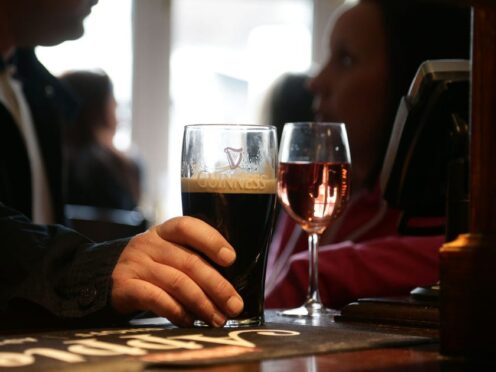More than two-thirds of beer and wine served in UK pubs and bars is short measured, a survey by Trading Standards suggests.
Officers who visited 77 pubs and bars were served 96 short measures out of 137 orders, meaning approximately 70% were less than the prescribed quantity required by The Weights and Measures Order for pints and half pints and 175ml glasses of wine.
Of the short measures, 41 were under by 5% or more – 29% of the 137 drinks tested.
Some 86% of all beer ordered was short measured, as was 43% of wine.
The average deficit for short-measured beer was 4%, while for wine it was 5%.

For the average beer drinker, this equates to a loss of £1.70 per week, or £88.40 a year, and for an average wine drinker in the UK this jumps to £2.20 per week or £114.40 per year, the Chartered Trading Standards Institute (CTSI) said.
The largest short measure was 15% under, found on a 175ml glass of wine in Walsall, with the drink costing £3.20.
The next largest short measure was under by 13.4% found in Belfast on a glass of wine costing £7.20, while the third largest deficit was of 12% and found on a 175ml glass of wine bought in Havering, costing £5.75.
A poll by the CTSI found three times as many people aged under 45 supported bars and pubs being able to pour spirits without a spirit measure compared to those over 45 years old.
The findings come at a time when the price of alcoholic drinks is at an all-time high.
The average price of a bottle of red wine has increased by 8% in the last year, while the average cost of a pint of lager is up 5.6%, according to the Office for National Statistics.
Legally, the frothy head on a pint of beer is included in the measure.
The CTSI’s survey found 35% of the public felt the head should not be included in the pint measure and 23% thought it should.
The Campaign for Real Ale (CAMRA) maintains that the pint measure should not include the head and consumers should have a right to a 100% liquid pint.
CTSI chief executive John Herriman said: “While this is a snapshot, it is the first time that we have been able to build a national picture of how widespread short measuring of alcoholic drinks are, and the potential detriment to the average consumer of around £115 every year suggests there is the need for more comprehensive research to better understand the impact of short measures, not just for alcoholic drinks but across a broader spectrum of consumer goods.
“Weights and measures is a key role for Local Authority Trading Standards, but right now we simply don’t have the resources to allocate, and even the equipment to use, to undertake spot checks that ensure consumers are getting what they pay for.
“We are calling on the hospitality sector to ensure that consumers get value for money by making sure they are correctly measuring the drinks they are serving to customers in the nation’s pubs and bars and for further research in this area.”
The Campaign for Real Ale (Camra) national chairman Nik Antona said: “Consumers shouldn’t have to feel short changed when they support their favourite pubs, social clubs, and taprooms. The idea that 70% of all beer bought at the bar is being short measured in the UK is extremely concerning.
“For anything that is short measured, and particularly anything more than 5% short, you should ask the bar staff for an immediate top-up. You are well within your rights to do this, and the staff should comply and fulfil this request.
“If you get a negative reaction when you do this, you can get in contact with Trading Standards to report the incident.”
Emma McClarkin, chief executive of the British Beer and Pub Association, said: “Pubs across the country take great pride in serving the amazing range of beer brewed in this country and in no way want to be accused of short-serving the millions of customers who enjoy visiting our nation’s pubs each week.
“Beer is carbonated and is typically sold with a foamy head, although there is considerable difference between consumer preferences for the head that different beers naturally produce.
“This is reflected in industry guidance which says that the measure of beer served with a head must include a minimum of 95% liquid. Customers who would like less of a head should always feel free to ask for a top-up and should never be refused.”
